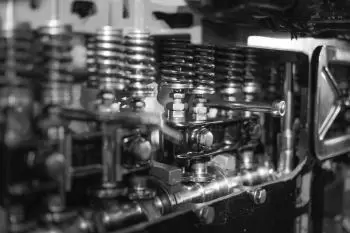
The compression ignition engine is a combustion engine that works following the diesel cycle. This classification refers to the way the fuel combustion starts inside the piston.
In the compression engine, what enters the combustion chamber initially is only air. Diesel is injected more or less close to top dead center. The fuel goes into a liquid state, but it is dense. The dense fuel must vaporize, mix with air, and reach the appropriate pressure and temperature conditions to ignite.
The time this process takes is the self-ignition delay and limits the speed at which the engine can rotate and therefore its maximum power. The load varies by modifying the amount of diesel fuel injected. Always enter the maximum amount that the engine supports under certain conditions.
The high combustion temperature in areas where the mixture is richer causes the association of oxygen and nitrogen from the air, leading to high NOx emissions. Soot and hydrocarbons that have not been burned are also formed in these areas and are another source of polluting emissions.
How does a compression ignition engine work?
Air is allowed into a cylinder via an intake valve. A piston or plunger compresses the air and, at maximum compression, we introduce fuel through an injector or atomizer.
Due to the increase in pressure, combustion occurs spontaneously. The increase in temperature and pressure pushes the piston providing mechanical work. Once the combustion is finished, the piston re-compresses the gases that are expelled from the cylinder to the exhaust valve. The cylinder expands again to make room to draw in more air and repeat the cycle.
What is the difference with a positive ignition engine?
The operation of the compression ignition engine or diesel engine is very similar to a four-stroke gasoline engine.
In the case of the gasoline engine or Otto engine, the ignition is carried out by means of a spark caused by a spark plug. For this reason, it is also called a positive ignition engine.
The most relevant characteristic of the diesel cycle is that when the fuel is burned, the expansion of the gases is at constant pressure. This is achieved by adding more fuel while the combustion is taking place. When the piston is pushed by the expansion of the gases, fuel continues to be injected until the middle of the stroke.
What fuel is used in a compression ignition engine?
The fuel used in a compression engine can be:
-
Diesel or fuel oil
-
Treated oils (biodiesel)
-
Coal dust.
In general, they must be fuels that ignite spontaneously when subjected to high pressure.


